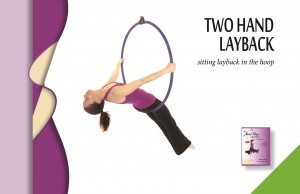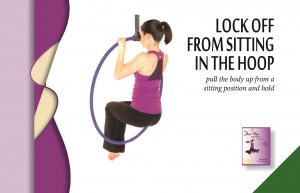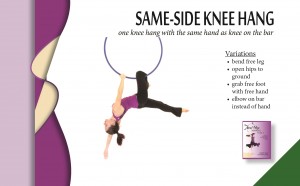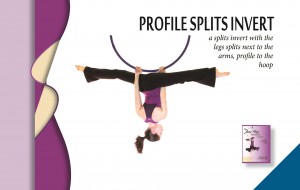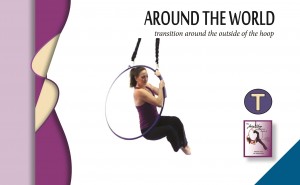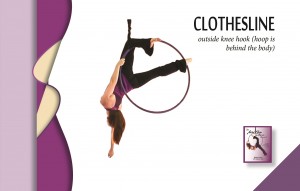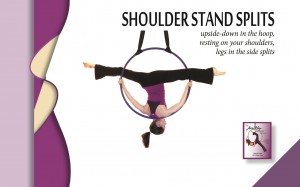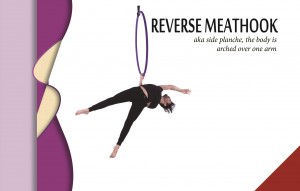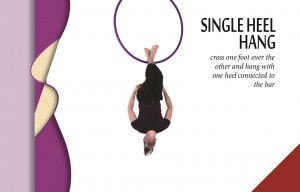As a teacher, it’s really easy to get warm-up burnout. As a student, sometimes it can be easy to think rolling on the floor stretching is a warm-up. Both sides can use more of the WHY involved behind the motions. If you know WHY you are warming up and what your GOALS are, they will be easier to meet. And hopefully this blog can help you find new, fun ways to meet those goals.
Bring on the HEAT
The first step of a warm-up is that it should elevate the body temperature to that next degree. If you are wearing a sweater when you start warm-up, you should want to take it off in the first 5-10 minutes of the warm-up. That means you need to BRING IT!
Cardio work is the easiest and sure-fire way to get everyone in class warm, but it doesn’t always have to be cardio. You can use yoga or Pilates, or something along that vain as well AS LONG AS IT IS GETTING THE CHEEKS PINK. When people are worn out from cardio, I hear the breathing get heavier, so I know that they are working, but with non-aerobic work, you won’t necessarily hear the breath change. Instead, you can look at the cheeks around you (on the face silly!) and look for the flush that comes when you are working hard. In yoga or other non-aerobic exercises, it may take more TIME to arrive in the warm-up state. For example, in a ballet class, you may prepare the legs for about 30-45 minutes before you demand them to jump and leap. Be prepared to allow all the time necessary for your warm-up to take people from cold->ready.
DO IT WITH PURPOSE
While you are doing this, use the time to teach other principles of the body. For example, while ballerinas are getting their legs and feet warmed up, they are not thinking “This is warm-up, and I can check out until the jumping happens.” No! Those very first plies and tendus of the workout teach alignment. Going slow helps prepare for setting up body pathways and habits so that when the heat is on, those degages can happen fast and fierce.
For aerial, that might look like a mock pull-up. It’s a little hard to do this progressively with with just pulling down on air, but just going through the motion is valuable as it sets up the body for knowing where it is supposed to be in space.
THE WHY
Why are we so interested that the body temperature goes up? Well, have you ever tried to stretch a cold muscle? If you have, then you intuitively know that it doesn’t feel like it’s going anywhere, but after that heat comes, that muscle is much more prepared to lengthen. When we are cold, the blood is not circulating as much to our extremities and our bodies are more in conservation mode. (If you suffer from cold hands, you may want to really up your game in warm-up until you have warm hands so that you know the blood is in full circulation mode.)
When our blood is circulating more, it is carrying oxygen and nutrients to our muscles to help everything function better, or so I’ve read. I can attest to the feeling, that’s for sure! Warm muscles = happy, ready-to-work muscles.
Care for the Body Parts that will be in High Demand
For our aerial classes, the main thing that we need to prepare is the shoulders because we are sure to use them. There is no way to let them check out when you are in climbing mode. But, it’s also good to give attention to other parts of the body. If you have a specific target area for that workout, be sure to target that especially! Example: If you are going to be doing splits in your double footlocks, well, you need to warm up your splits, etc.
Nerve Care
Nerve Flossing has recently completely changed my universe. I used to suffer from chronically stretching my hamstrings and not getting anywhere. Then, I took a course from Cirque Physio. Apparently, my nerves were totally stuck, because when they got unstuck, my whole world changed. So, of course, I’m passing on the tricks of the trade to my students. In the following warm-up video, we are focusing on nerve flossing for the legs to help improve everyone’s pike position. Then, we focus on the ulnar nerve stretch to check in and see if anyone was tight there. All these exercises came from the courses by Cirque Physio, which I highly recommend. Check out the courses: Click here to visit Cirque Physio.
Peanut Rolling/Self-Massage
Before I was inspired by Cirque Physio to buy some peanuts, I lived on my foam roller. Both are incredible tools for getting muscles more ooey gooey and supple. When you first start rolling, the pressure might hurt, but soon, you’ll toughen up and get addicted!
For me, rolling replaces where I used to stretch. I still swing around my shoulders and dynamically stretch, and sometimes, especially on hot days, I may still add in brief stretches into the warm-up after the cardio portion, but in the colder months, getting on the rollers help to loosen up muscles and fascia in a way that stretching can’t.
In the video, you might see us rolling on our pec minor. This is an exercise that Cirque Physio highly recommends in order for the shoulder blade muscles in the back to function better. The pec minor tends to be tight and since it attaches to the scapula, it can sometimes get into a sibling fight with the muscles that attach to the other side of the scapula. Prevent the fight (and your bad rounded shoulder habits) by telling the pec minor to back-off.
Rotator Cuff/Shoulder Engagement
The key thing here is that this is not an exhausting workout for your rotator cuff muscles (link is to a previous blog that includes a great video of what your rotator cuff muscles are). If they get worn out, they are not going to able to properly stabilize your shoulders and you actually put yourself MORE at risk for shoulder injury instead of less. But, with just the right amount of activation and engagement, you invite these suckers to fire on and help protect your shoulders. There are a large variety of exercises you can do here, and I will be covering some of my favorites in an upcoming blog. In this video, I have my students do: external rotation with the resistance bands, horizontal shoulder abduction, and then a lovely stretch sequence which helps to open up the shoulders
Everything in Moderation
With every aspect in warm-up, there’s a line where it’s too much. Too much cardio and you won’t have any energy left for a workout. Too much nerve flossing and your limbs will go numb. Too much muscle engagement and you’ll be fatigued even before the workout starts!
However, it’s really important to note that beginner students WILL get pretty worn down by warm-ups at first. They are highly likely to think they are too long. They might think they are doing things that aren’t really necessary (can’t I just climb that fabric now?), but stick with it! In the long run, they will learn something called appreciation. They will see (and notice!) the difference. Time and time again, I’ve watched people CHANGE their minds about warm-up. I known I have a warm-up convert when my students come in before a class or private lesson, etc, and they know exactly what to do to warm-up. They are over on the sideline doing Pilates hundreds, working their butt off like mad. And what completely wipes out a beginner doesn’t even phase them anymore because it’s been in every warm-up for the past 6 months.
There’s No Such Thing as “One Size Fits All” For Warm-Ups
Although aerial teachers do their best to find a “one size fits all” for warm-ups, I always tell my students that there is no perfect warm-up that I can give them. However, I am there to help them discover the perfect warm-up for their own body. I believe in perfect warm-ups for individual bodies, and my hope is that students will come early to class and continue side-line warm-up throughout class until they feel like they are in their peak condition for that day for that class. Yes, I have high expectations. It’s what makes me a good coach. 🙂
And while not every student comes early to class, I do see students going rogue in my warm-ups which makes me really HAPPY because they are learning that they need to take responsibility for their own bodies and listen to the needs of their bodies. I always tell the story of how I got injured and therefore, I need XYZ to make my shoulder move. If I relied on a “generic” warm-up, I wouldn’t have the best workouts because my shoulder needs more care to prevent stiffness (which I’ll get so bad I can’t sleep if I don’t warm up or cool down properly)! So, I have to independently add in stuff before or during class so ensure my own self-care. Everyone will have their thing — certain tight spots, etc, that needs extra attention and it’s important that individual needs are addressed. There’s NEVER enough time to do it all or do it perfectly, but the best thing we can do is educate. The rest is up the students to step up and take responsibility!
This video shows an example of a 30 minute warm-up which is included in a 90 minute class. Enjoy!


